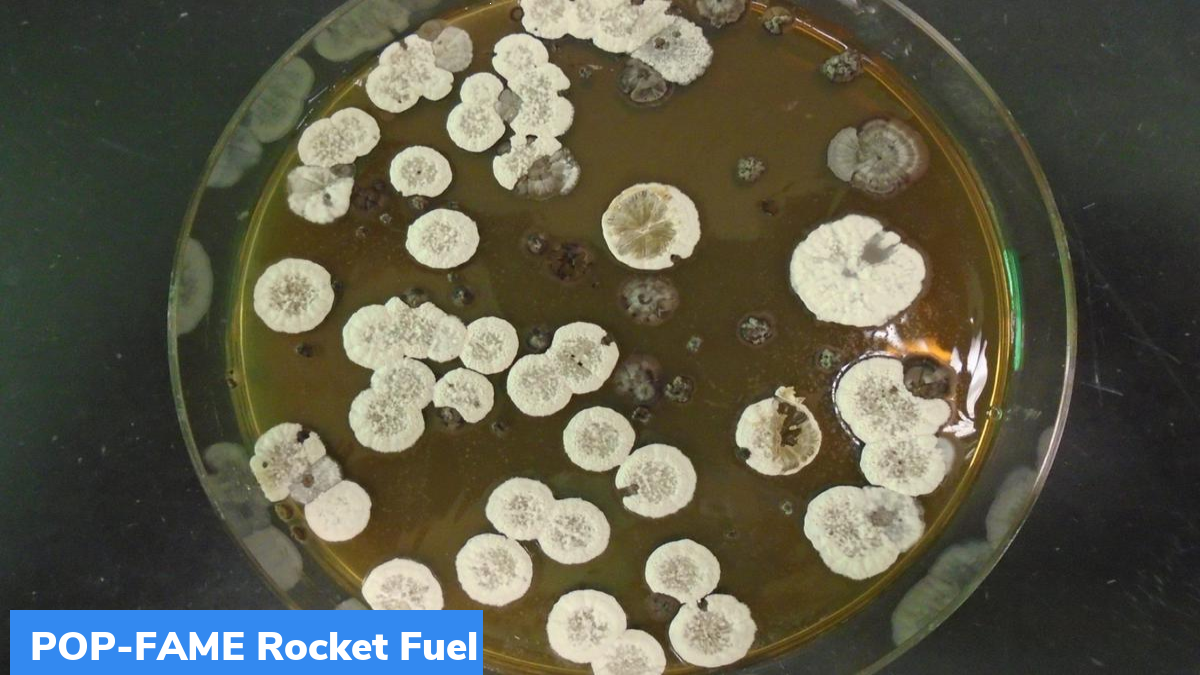POP-FAME: Rocket fuel from Bacteria
Researchers from US Lawrence-Berkeley Lab recently developed “POP-FAME”, which is a fuel from a bacterium. It has more energy than even the rocket fuels have.
Highlights
- As per simulation data, POP-FAME fuel has energy density values more than 50 megajoules per litre, against 32 MJ for petrol and 35 MJ for RP-1, which is a rocket fuel based on kerosene.
- POP-FAME fuel name stands for “Polycyclopropanated Fatty Acid Methyl Ester”.
Syntin Fuel
During 1960s, a petroleum-based rocket fuel Syntin was developed by Soviet Union. This fuel was used to launch several Soyuz rockets, successfully in 1970s. however, its manufacturing was stopped due to high costs and unpleasant process involved. It was produced through a series of synthetic reactions with toxic by-products and explosive & unstable intermediate.
Structure of POP-FAME
Molecular structure of POP-FAME is similar to Syntin. Three-carbon ring (triangle with carbon atom at three vertex) is at its heart. Each carbon atom of the ring makes bonds with two other carbon atoms and two other elements. This structure is known as a cyclopropane. Cyclopropane have potential energy in their bonds.
Why is POP-FAME an ideal rocket fuel?
POP-FAME have higher energy densities, as compared to Syntin. Thus, even a small quantity of fuel can have considerable energy. Thus, it can be considered as an ideal rocket fuel. However, one challenge is to remove the two oxygen atoms with each molecule, in order to avoid weight in the rocket.
Month: Current Affairs - July, 2022
Category: Science & Technology Current Affairs


